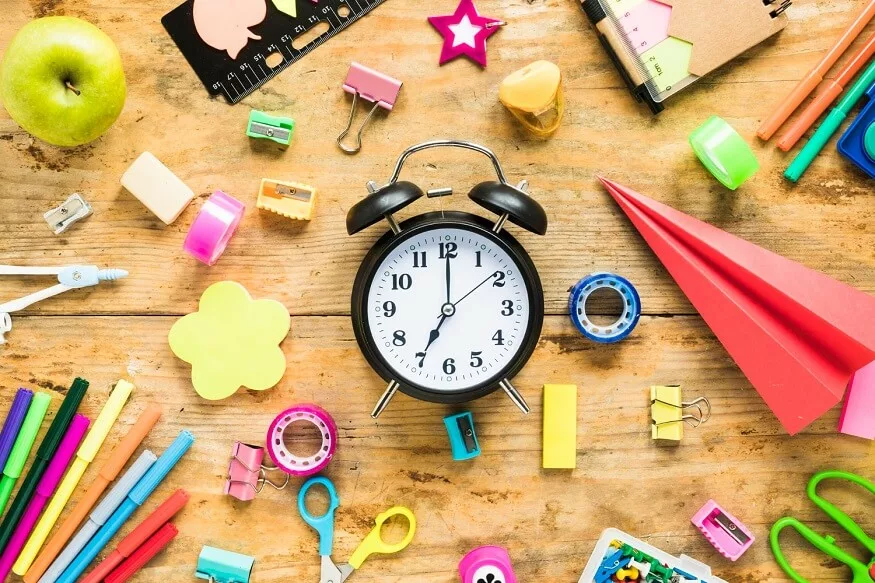In a world predominantly designed for the right-handed majority, left-handed children often find themselves grappling with unique challenges that extend beyond the simple act of writing. From ergonomic tools to societal expectations, the struggles faced by these young southpaws can be both nuanced and pervasive.
Understanding and addressing these challenges is crucial for fostering an inclusive and supportive environment for left-handed children. In this article, we delve into the distinctive struggles faced by left-handed children and provide practical insights on how parents, educators, and society as a whole can empower and assist them.
What do left-handed children struggle with?
Here are some common struggles that left-handed children may face:
Educational Tools and Materials
Right-Handed Desks: Classroom desks are often designed with right-handed students in mind, making it uncomfortable for left-handed children to write and work efficiently.
Right-to-Left Writing Systems: Languages that are traditionally written from right to left, such as English, may pose difficulties for left-handed writers as their hand may smudge the ink or pencil marks.
Writing Techniques
Penmanship and Handwriting: Left-handed children may find it challenging to develop neat handwriting due to the natural left-to-right movement of the hand, which can result in smudged writing and a struggle to maintain a consistent slant.
Scissors and Tools
Right-Handed Scissors: Standard scissors are often designed for right-handed users, making cutting activities in school or at home more cumbersome for left-handed children.
Right-Handed Tools: Various tools, from can openers to computer mice, may be ergonomically designed for right-handed use, leading to difficulties and discomfort for left-handed individuals.
Sports and Physical Activities
Sporting Equipment: Many sports equipment items, such as baseball gloves or golf clubs, are tailored for right-handed players. Left-handed children may need to search for appropriate gear, and in some cases, it may be less readily available.
Social Interactions
Handshakes and Gestures: Social norms often involve right-handed gestures, such as handshakes. Left-handed children may feel awkward or struggle in social situations that are geared towards right-handed customs.
Sharing Tools: In group activities or collaborative projects, left-handed children may need to adapt to using tools designed for right-handed individuals, potentially impacting their performance and comfort.
Cultural Stigmas
Historical Biases: While overt prejudices have diminished, some cultural stigmas associated with left-handedness may persist, contributing to feelings of being ‘different’ or ‘othered.’
Adaptation and Awareness
Constant Adaptation: Left-handed individuals often need to adapt to a right-handed world, leading to a continuous need for adjustments in various daily activities.
Lack of Awareness: The general lack of awareness about the unique challenges faced by left-handed children can contribute to a lack of accommodation and understanding in educational and social settings.
Self-Identity and Confidence
Feeling Different: Left-handed children may struggle with a sense of being different from their peers, potentially impacting their self-identity and confidence.
Coping with Challenges: Overcoming the daily challenges associated with a right-handed world can contribute to resilience but may also pose emotional and psychological hurdles.
Also Read: What Are The Characteristics Of Introverted Children? How To Nurture Them
Helping Left-Handers in a Right Hander World
Here are various ways in which parents, educators, and society at large can extend a helping hand to left-handed children, fostering an environment that celebrates diversity and inclusivity.
Writing Woes and Practical Solutions
The act of writing can be a significant hurdle for left-handed children, often resulting in frustration and discomfort. Pens and pencils designed for right-handed individuals can lead to smudged pages and awkward hand positions. To ease this struggle, it is essential to introduce left-handed-friendly writing tools into the learning environment.
Teachers and parents can advocate for the use of pens with quick-drying ink to reduce smudging. Additionally, notebooks with smoother paper texture can enhance the writing experience for left-handed children. Encouraging the adoption of these tools not only addresses the practical challenges but also sends a powerful message of inclusivity, showing left-handed students that their needs are considered and valued.
The Scissors Saga
Art and craft activities, integral to a child’s development, can become a source of frustration for left-handed children when faced with right-handed scissors. These traditional scissors force awkward hand positions, hindering precision in cutting. To alleviate this issue, educators and parents should invest in left-handed scissors specifically crafted to suit their natural hand motion.
By incorporating left-handed scissors into the arts and crafts supplies, we not only empower left-handed children but also instil a sense of adaptability in all students. Acknowledging and addressing these seemingly small yet significant challenges contributes to creating an environment where each child’s uniqueness is embraced.
Also Read: Development Milestone: When Can My Child Use Scissors?
Tackling Social Stigma with Understanding
Beyond the practical aspects, left-handed children may encounter social stigma and peer pressure due to their differences. Teasing and exclusion based on handedness can impact a child’s self-esteem and sense of belonging. Parents and educators play a vital role in fostering an environment where diversity is celebrated rather than shunned.
Incorporating discussions on diversity and uniqueness into the curriculum can help break down stereotypes surrounding left-handedness. Encouraging empathy and understanding allows children to appreciate differences, creating a supportive atmosphere where each child feels accepted regardless of their dominant hand. Teachers can also intervene when they observe instances of teasing or exclusion, promoting a culture of respect and inclusivity.
Left-Handed-Friendly Sports
Engaging in sports and physical activities is crucial for a child’s overall development. However, left-handed children may face additional challenges due to the right-handed orientation of sports equipment and coaching techniques. Schools and sports facilities can contribute to a more inclusive sports culture by investing in left-handed sports equipment where available.
Coaches can enhance their effectiveness by understanding the unique needs and strengths of left-handed players. Creating an environment where left-handed athletes feel supported and valued contributes not only to their physical development but also to breaking down societal norms that perpetuate right-handed dominance.
Classroom Dynamics
Traditional classroom setups may inadvertently contribute to the challenges faced by left-handed children. Desks designed for right-handed students can pose spatial and interaction challenges during group activities. Educators can make simple yet effective changes to address these issues. Introducing flexible seating arrangements or providing alternative desk setups that cater to left-handed students promotes inclusivity in the classroom.
By accommodating the diverse needs of all students, EuroSchool creates an environment that fosters a sense of belonging and equal participation for everyone.









